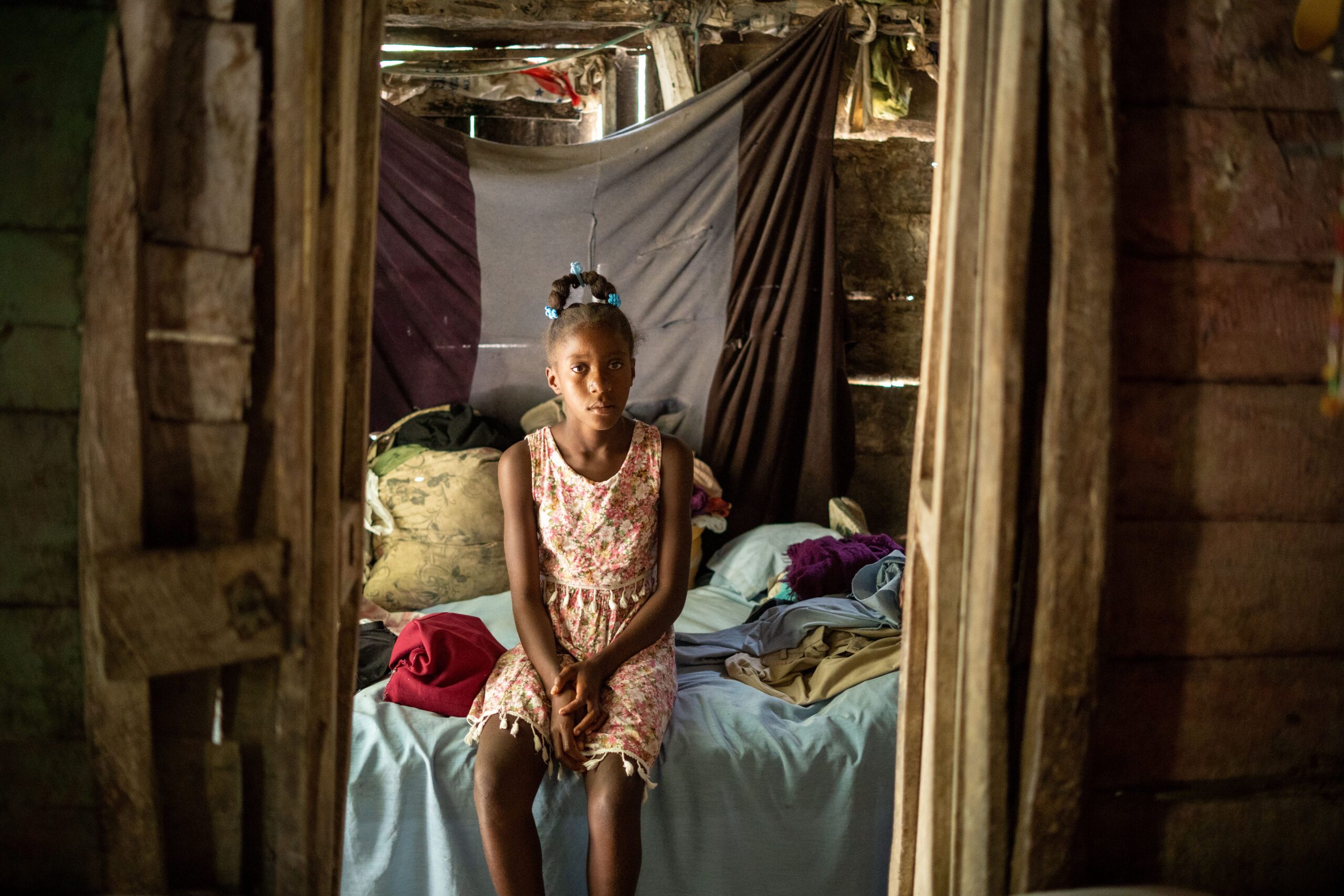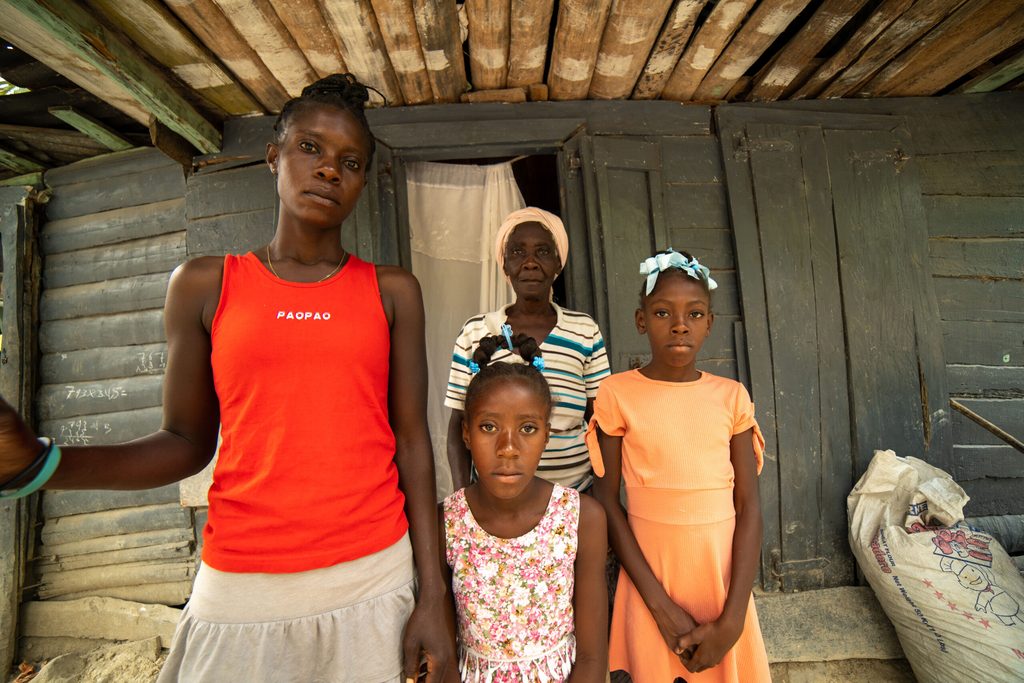Hunger impacts girls’ education in Haiti
The hunger crisis in Haiti is leaving children like Chedeline, 12, weak and unable to learn.

Chedeline, 12, at home in Haiti.
“When I’m hungry, I can’t study,” says 12-year-old Chedeline when we meet her at her school in Haiti’s South East department. “I haven’t eaten anything this morning – I hope to eat some rice later today.”
There are 2 ladies in tents making and selling cakes and sweets nearby the school, but Chedeline and most of the other children here do not have the money to buy food.
The school itself is constructed from wooden planks that allow water to seep through during heavy rains. It has no access to drinking water, meaning the children must get water from the river, which is also showing signs of drying out.
Although she studies hard, her grades have dropped since the hunger crisis hit Haiti. “I would like to learn nursing so I can help sick people,” she shares. “I think if I were better fed I could get higher grades,” says Chedeline.
A risky daily journey from home to school
To get to and from school, Chedeline has to walk along abandoned, rocky roads with her younger sister, and cross what remains of a river that connects to her school. Although the route is risky, she walks it most days with her friends.
“I think if I were better fed I could get higher grades.”
Chedeline
Chedeline lives with her mother, grandmother and sister in a small wooden house with only one window. Her father died many years ago. They share a little garden that has become dry due to lack of rain and has been taken over by the family’s chickens. She enjoys playing with her cousins who live across the street, who are around the same age.
Her grandmother and mother work as merchants, reselling fruits such as soursop (typical of the region of the Americas), custard apple, and oranges. With the leftovers and any income from their daily sales, they provide what little food they can for the children.

“I often go days without eating,” shares Chedeline. “I don’t eat 3 times a day because my family can’t afford it. I usually eat a little rice, maize, or millet each day. I don’t eat anything else due to lack of money. I rarely eat meat.”
Chedeline’s poor diet has made her visibly weak, and she says she often feels unwell and too tired to do anything. Despite her evident hardship, Chedeline realises she is not the only one suffering. “Other children are in the same situation as me, or worse. It’s difficult for them to find food to eat because their parents do not receive any help.”
Getting help to where it’s most needed
Plan International is responding to the hunger crisis in the South East and North East departments of Haiti. It has supported more than 3,700 families with cash transfers and food vouchers to help families like Chedeline’s.
In addition, it has trained 4,500 volunteers to give nutritional and child protection talks in the communities. Due to poor water and sanitation conditions, Plan International is also delivering hygiene kits in response to the cholera outbreak.
Categories: Emergencies


